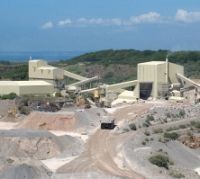

Stunned grandmother, Betty Wilson, expressed her shock after a faulty blast at a quarry sent an enormous boulder smashing through her roof and into her shower.
Mrs Wilson feared she could have been killed if she had been in her bathroom at the time. She said, "The developers had told us they would be carrying out a controlled explosion near our house. But there was a huge blast, then I heard this almighty crash. My toilet was covered in shattered glass and rubble. And a large granite boulder was sitting there. Thank God I decided against having a shower at that time, or I would be dead".
Her home was one of five damaged when granite rocks were sent hurtling through the air. Several cars were also damaged following the blast at the site near Barrwood in Kilsyth, which was being cleared to make way for a housing development.
Fortunately, nobody was hurt. Construction company, Dawn Homes, said debris from the controlled explosion "exceeded the perimeter of the safety exclusion zone" and that it "regretted any inconvenience caused". Investigators from the Health and Safety Executive (HSE) are to visit the blast site.
Blasting is one of the most potentially dangerous operations in hard rock quarrying. There is the immediate risk associated with the storage, transport and handling of explosives, wider on-site risks associated with firing the shot itself, and secondary risks (as Mrs Wilson will no doubt confirm) such as flyrock going beyond the quarry boundary. It is essential that those involved understand how best to avoid or manage the risks.
The Quarries Regulations SI 1999/2024 require quarry operators to ensure that anyone working at a quarry should be competent to do so (or be under competent supervision if being trained). They clarify that competent means "a person with sufficient training, experience, knowledge and other qualities to enable them properly to undertake the duties assigned to them".